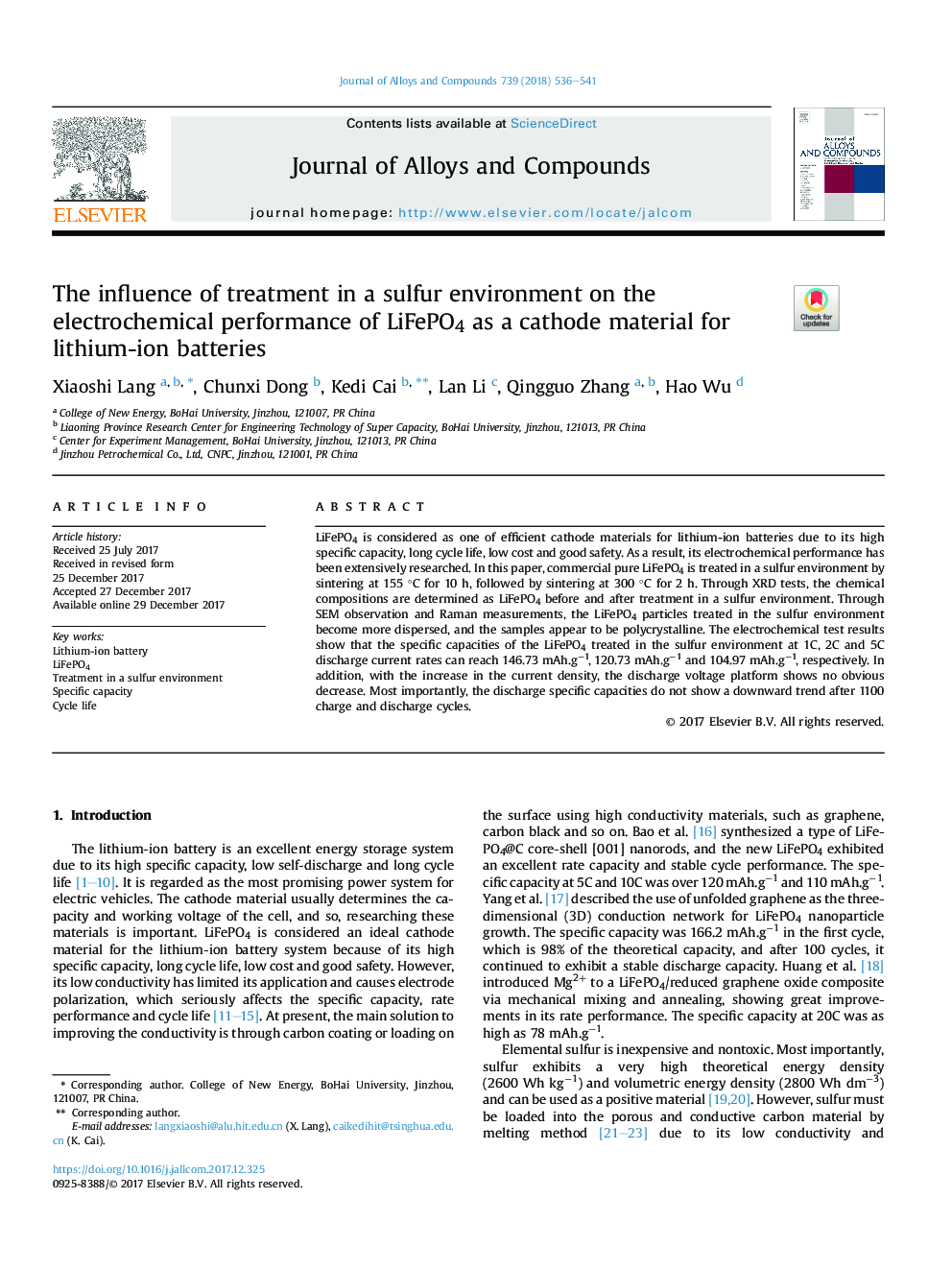| Article ID | Journal | Published Year | Pages | File Type |
|---|---|---|---|---|
| 7994088 | Journal of Alloys and Compounds | 2018 | 6 Pages |
Abstract
LiFePO4 is considered as one of efficient cathode materials for lithium-ion batteries due to its high specific capacity, long cycle life, low cost and good safety. As a result, its electrochemical performance has been extensively researched. In this paper, commercial pure LiFePO4 is treated in a sulfur environment by sintering at 155 °C for 10 h, followed by sintering at 300 °C for 2 h. Through XRD tests, the chemical compositions are determined as LiFePO4 before and after treatment in a sulfur environment. Through SEM observation and Raman measurements, the LiFePO4 particles treated in the sulfur environment become more dispersed, and the samples appear to be polycrystalline. The electrochemical test results show that the specific capacities of the LiFePO4 treated in the sulfur environment at 1C, 2C and 5C discharge current rates can reach 146.73 mAh.gâ1, 120.73 mAh.gâ1 and 104.97 mAh.gâ1, respectively. In addition, with the increase in the current density, the discharge voltage platform shows no obvious decrease. Most importantly, the discharge specific capacities do not show a downward trend after 1100 charge and discharge cycles.
Related Topics
Physical Sciences and Engineering
Materials Science
Metals and Alloys
Authors
Xiaoshi Lang, Chunxi Dong, Kedi Cai, Lan Li, Qingguo Zhang, Hao Wu,
